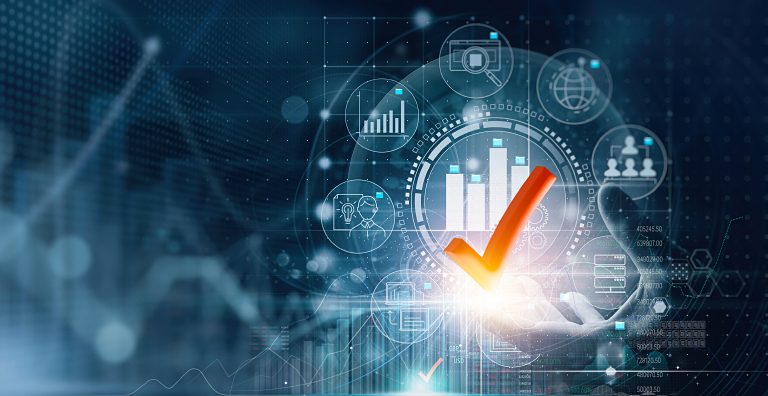What Is PIAM? Part 3: How PIAM Is Revolutionizing Compliance
Part 3: The Impact of PIAM on Today’s Compliance Landscape
Welcome back to our What Is PIAM? series, where we’ve been delving into the basics of physical identity access management (PIAM). In Parts 1 and 2 of our series, we explore the foundational concepts and practical applications of PIAM. Now we will begin to dive into the intricate world of compliance.
In this section, we aim to equip you with the essential building blocks of compliance as it relates to PIAM, i.e., compliance’s role in a physical identity access management (PIAM) solution. How Does Compliance Enter the PIAM Picture?
How Does Compliance Enter the PIAM Picture?
As you know by now, a PIAM solution allows organizations to be armed with identification, authentication, and access management of identities — for employees, visitors, contractors, vendors, partners, etc. While the market is expected to hit an all-time high this year, it is specifically expected to hit substantial growth in areas with stringent governance, security and compliance requirements, including aviation, government, logistics, and other sectors where security is an essential part of the business.
To ensure that your organization is equipped with the necessary tools to navigate the complexities of compliance, consider implementing a robust PIAM solution that prioritizes security education and employee identity management.
Top Considerations When It Comes to PIAM and Compliance:
- Regulatory landscape — Growing data privacy regulations like GDPR and CCPA demand robust physical access controls. There are increasingly more regulations and figuring them out is not as easy as black and white — they are all at different levels (national, union, country, state, etc.).
- Heightened security threats — Physical breaches like tailgating and piggybacking pose serious security risks
- Operational efficiency — Streamlined access control systems improve business efficiency and the employee experience
It’s important to understand the intersection of PIAM and compliance when navigating a complex security landscape. There are key factors that influence the role compliance plays within a PIAM solution and which can empower strategic decision-making to ensure the right solutions are put into place.
If you understand the regulations and how to translate them into rules and policies within the PIAM system, you have better grounds to make the right decisions for your organization, and to adjust as regulations evolve over time.
Regulatory Landscape Examples:
- Data privacy regulations — The global surge in data privacy regulations like GDPR (EU), CCPA (CA) and PDPA (Singapore) has significantly impacted PIAM compliance. These regulations often dictate data collection, storage and access practices, influencing PIAM solution features and implementation strategies.
- Industry-specific regulations — Specific industries like healthcare (HIPAA) and finance (PCI DSS) have additional compliance requirements impacting PIAM systems handling sensitive data or access to critical infrastructure. These include TSA, NERC, SIP and SOX.
- Certain regulations require segregated spaces — Anyone with access to sensitive information and groups that have market-facing teams such as the finance and energy sectors
Technology and Implementation
Biometric Authentication Adoption
Research from MarketsandMarkets (2023) forecasts the PIAM market with biometric authentication to grow at a CAGR of 16.7% by 2025, indicating its increasing role in enhancing compliance with privacy regulations and access control accuracy.
Cloud-Based PIAM Solutions
A 2022 Deloitte report suggests 80% of organizations are considering cloud-based PIAM solutions, potentially impacting compliance aspects related to data residency, encryption, and auditability.
Integration and Interoperability
47% of respondents in a 2023 survey by the Identity Theft Resource Center indicated difficulty integrating PIAM systems with existing security infrastructure, posing potential compliance challenges in data synchronization and access control consistency.
User Training and Awareness
59% of organizations highlighted the need for improved user training on PIAM systems to ensure compliance with access protocols and best practices. Source: 2023 study by HID
Privacy Concerns and Transparency
72% of Americans worry about companies collecting too much personal data, emphasizing the importance of PIAM solutions being transparent and compliant with privacy regulations to ensure user trust. Source: A 2022 report by Pew Research Center
PIAM — A Compliance Partner
Does a PIAM Solution Guarantee Compliance?
The short answer — no.
The long answer — compliance is a complex game involving regulations, policies, processes and people. PIAM offers a powerful tool belt for automating processes and enforcing controls.
The true magic lies in understanding your regulatory landscape and learning how to tailor the policies, rules and controls that PIAM relies upon to meet those requirements.
PIAM should be embraced as a compliance partner, not a silver bullet.
Conclusion:
- PIAM automates and streamlines compliance — It takes the manual labor out of access control, reducing human error
- PIAM does not do it all — You still need to understand the regulations, define your policies and train your users
- Compliance is dynamic — Regulations evolve, your organization grows and threats change. Treat PIAM as a partner you adapt with.
Think of PIAM as your security GPS. It will show you the way, but ultimately you need to navigate the twists and turns. Compliance is a journey, not a destination, but PIAM can be a great co-pilot along the way to enhancing governance, security and compliance.
